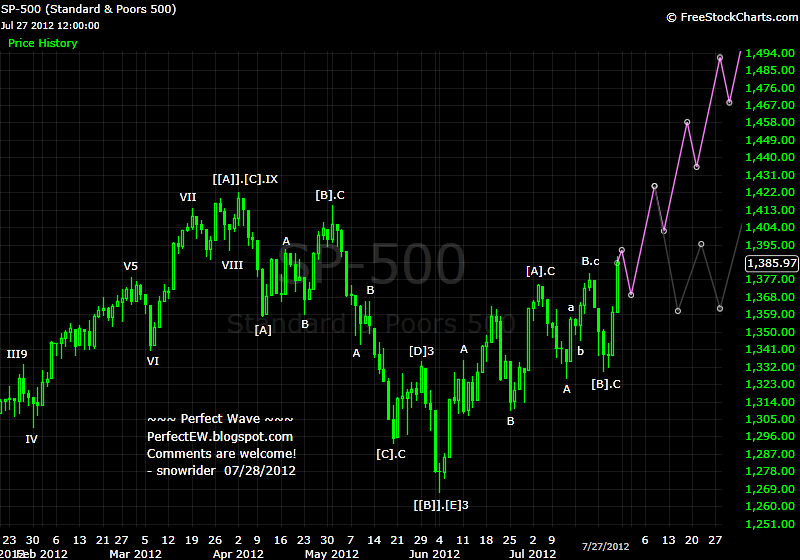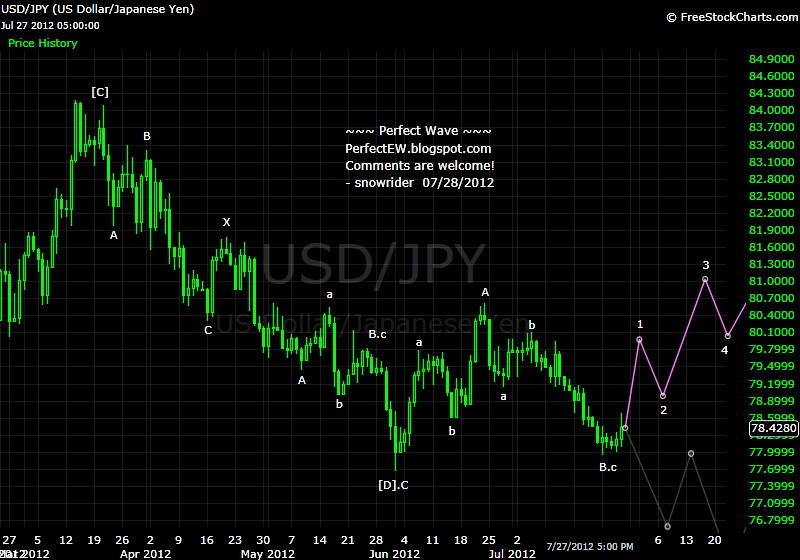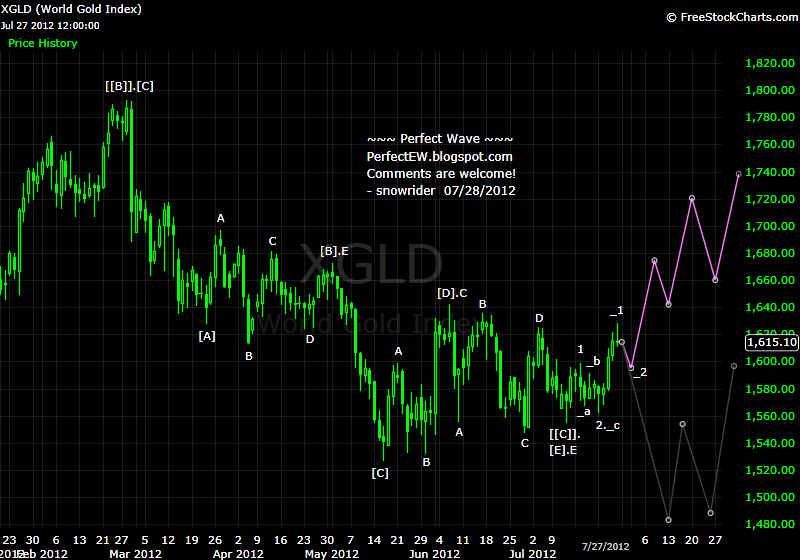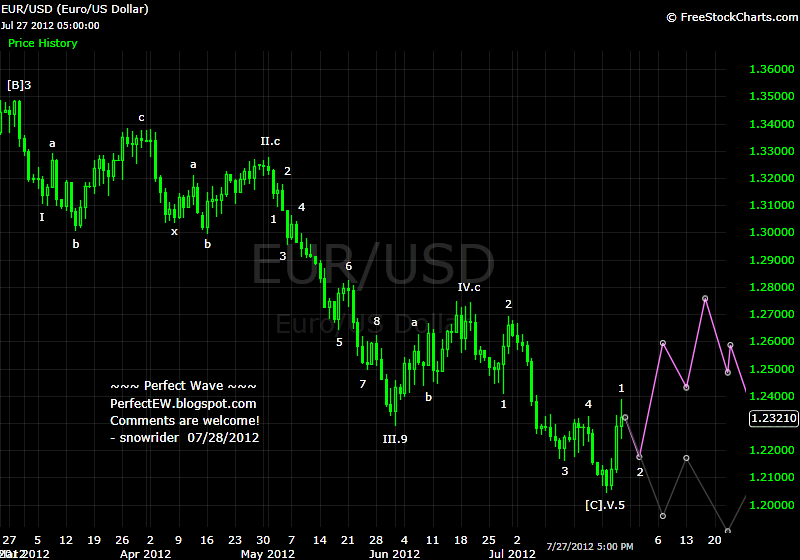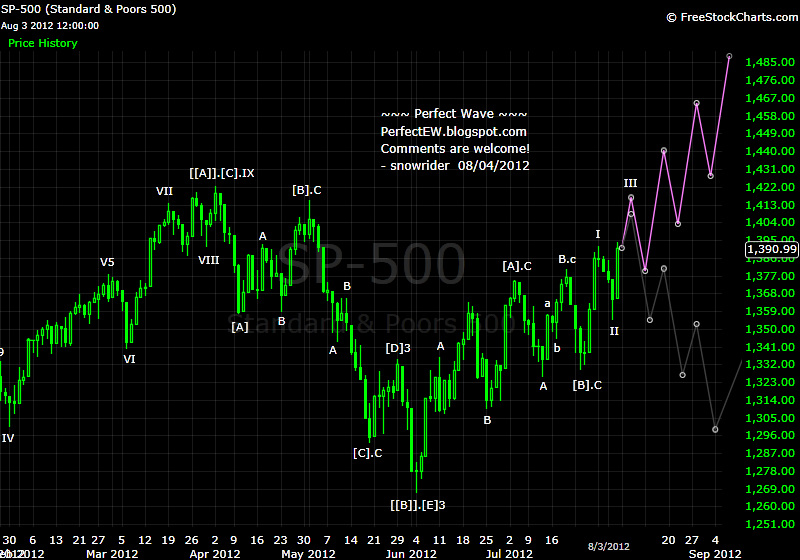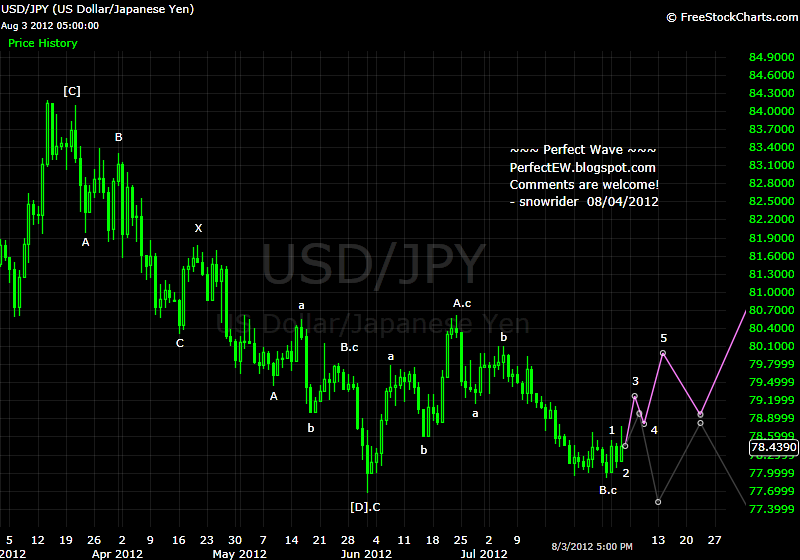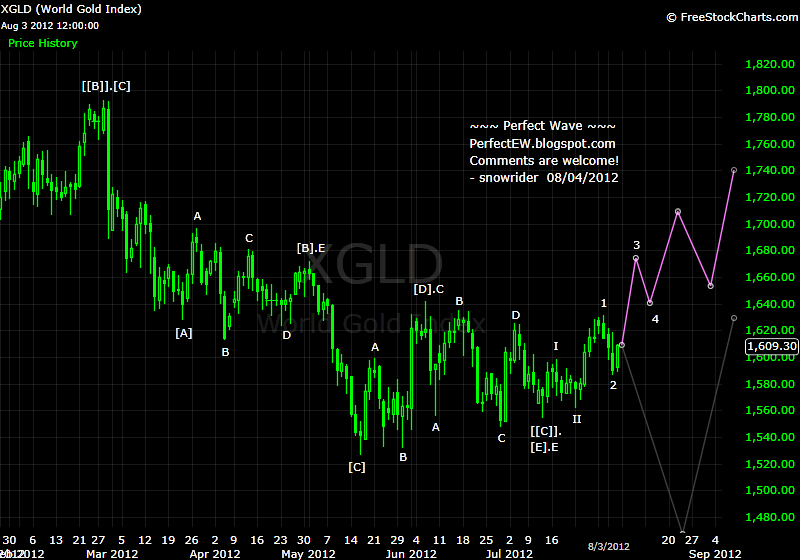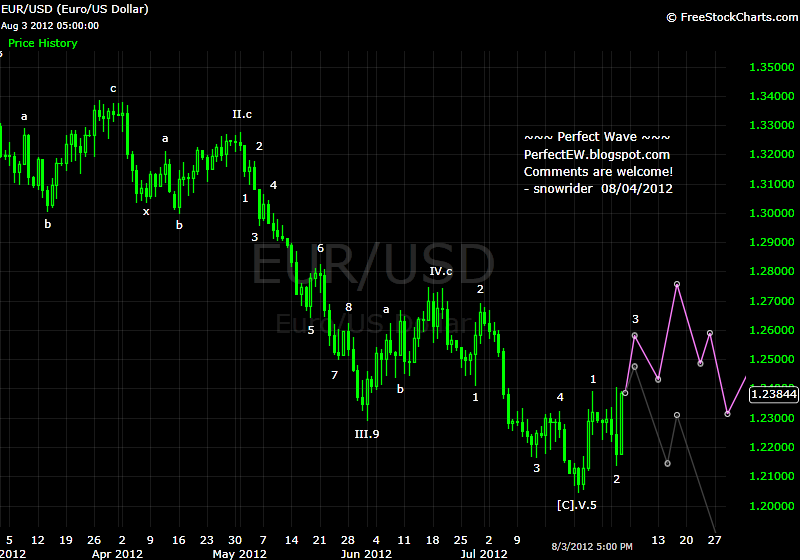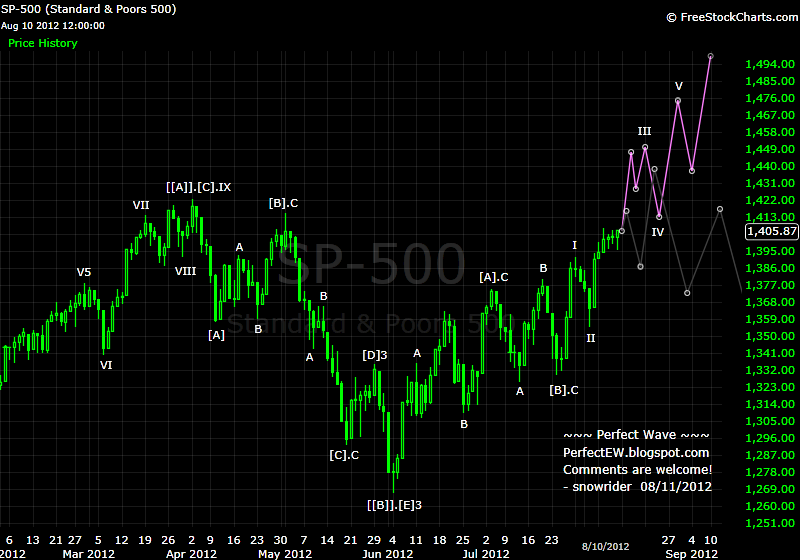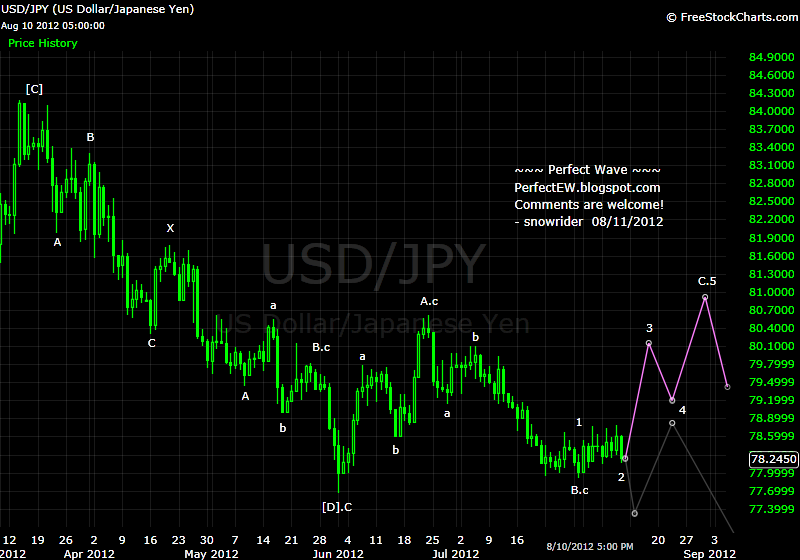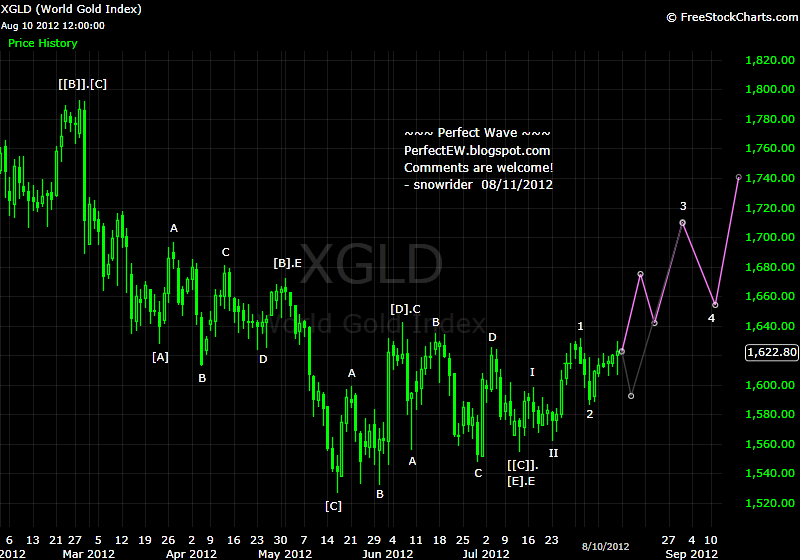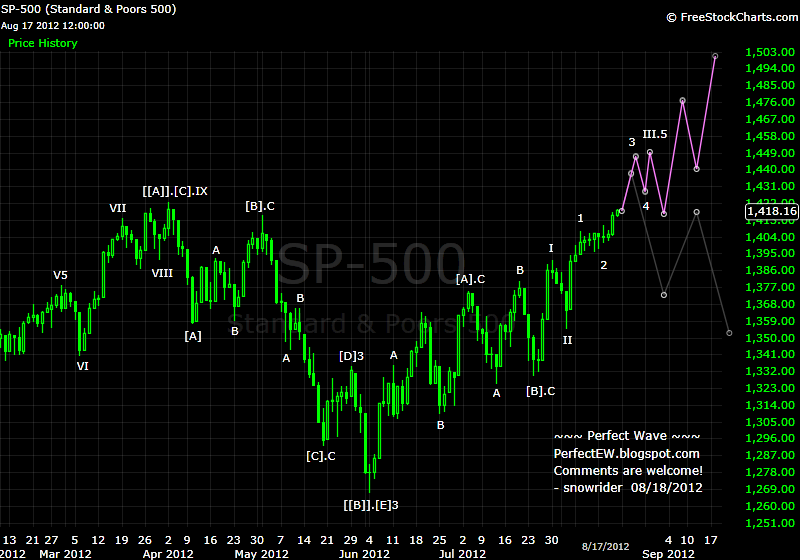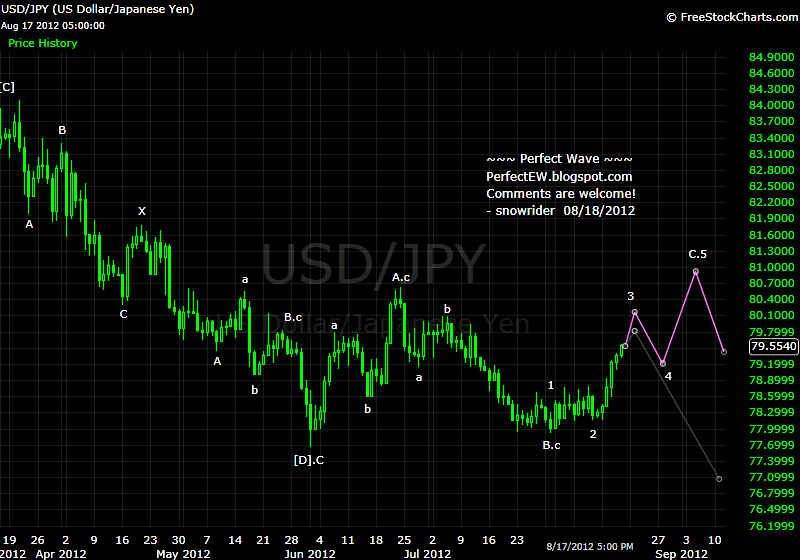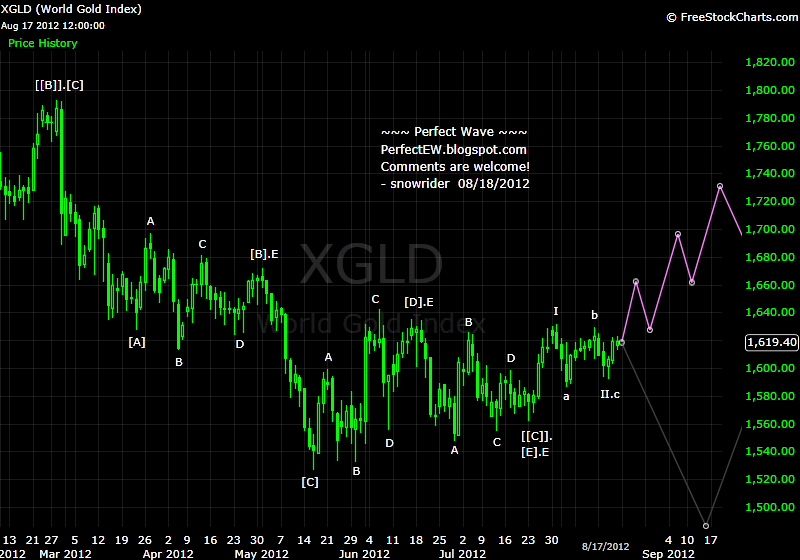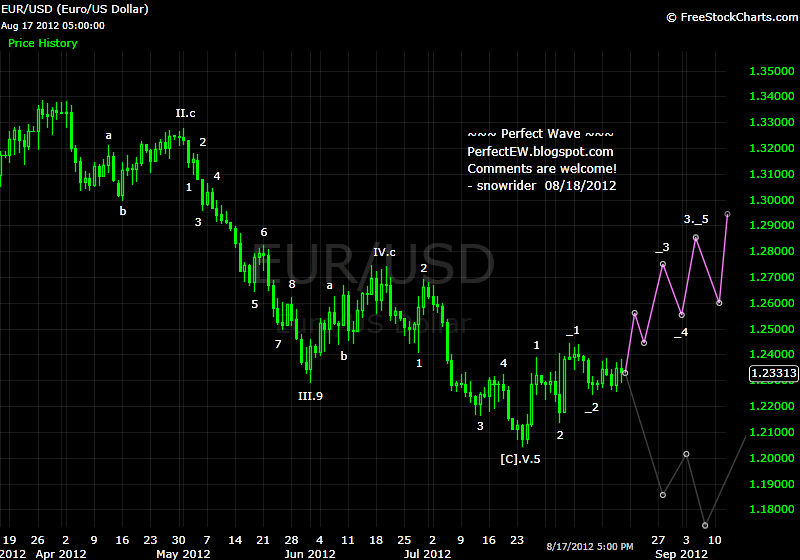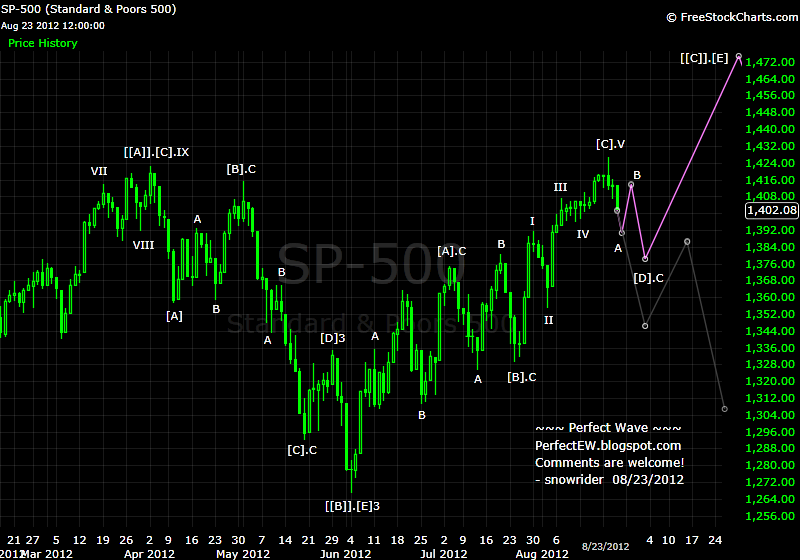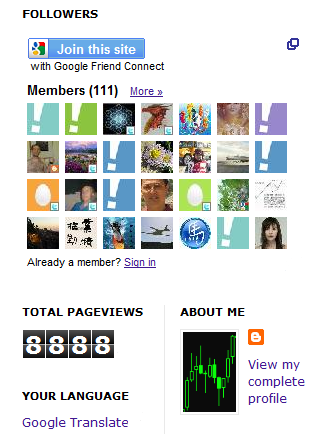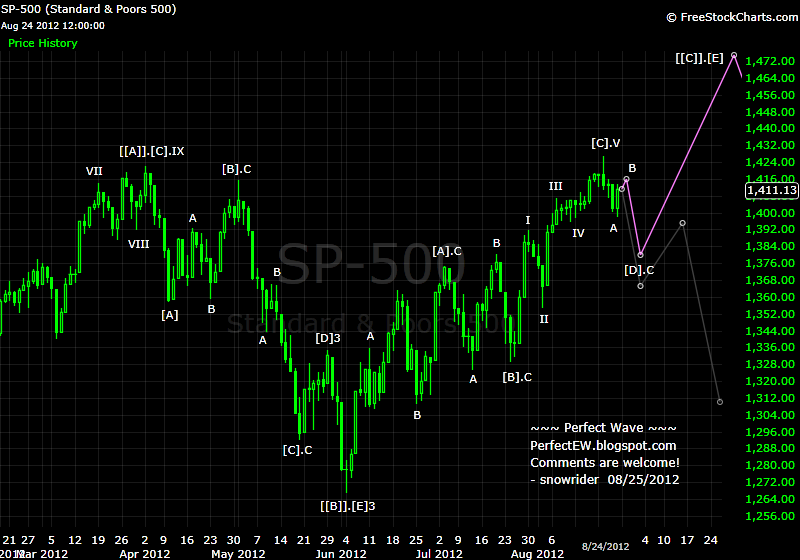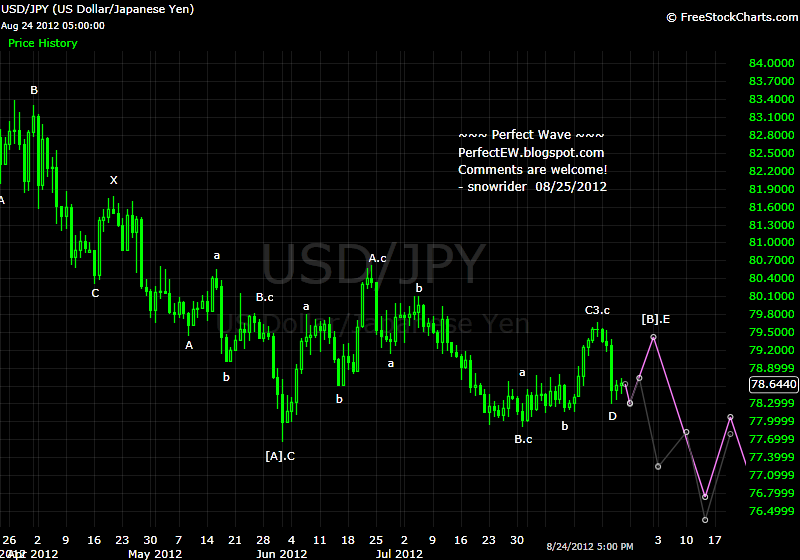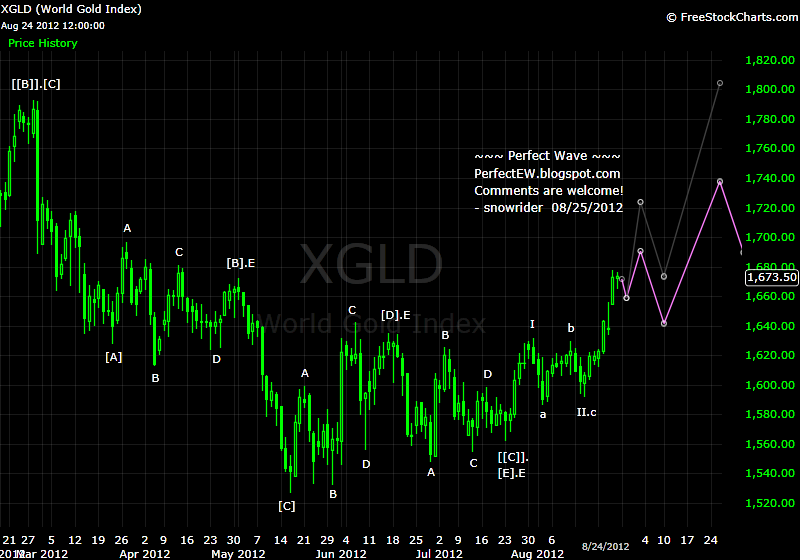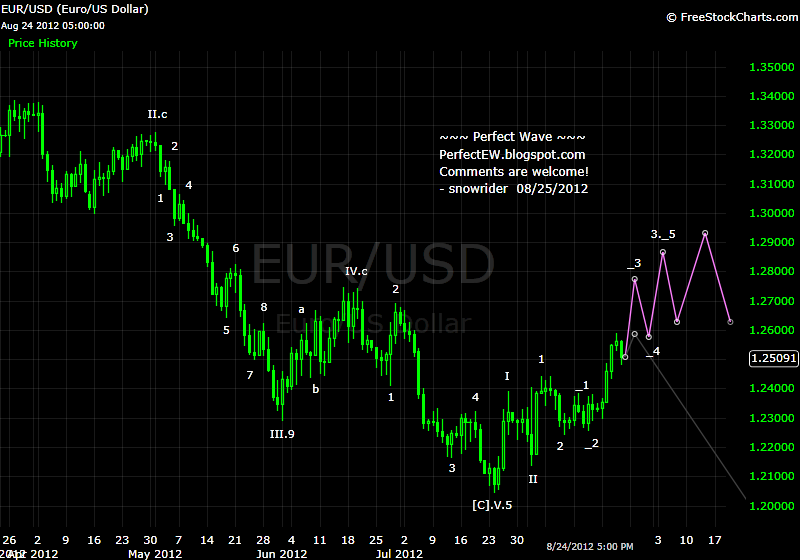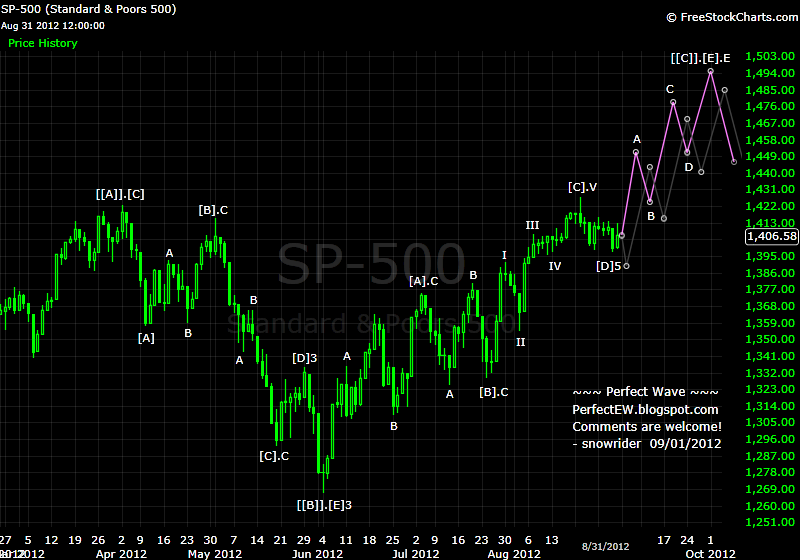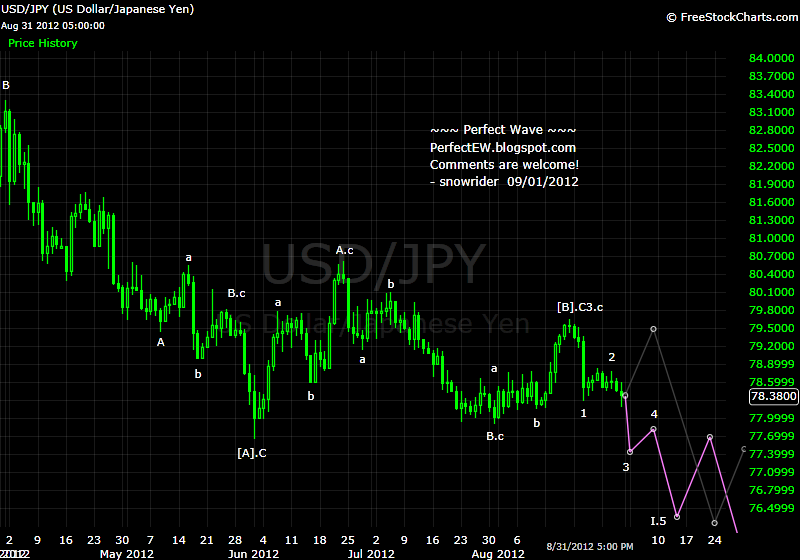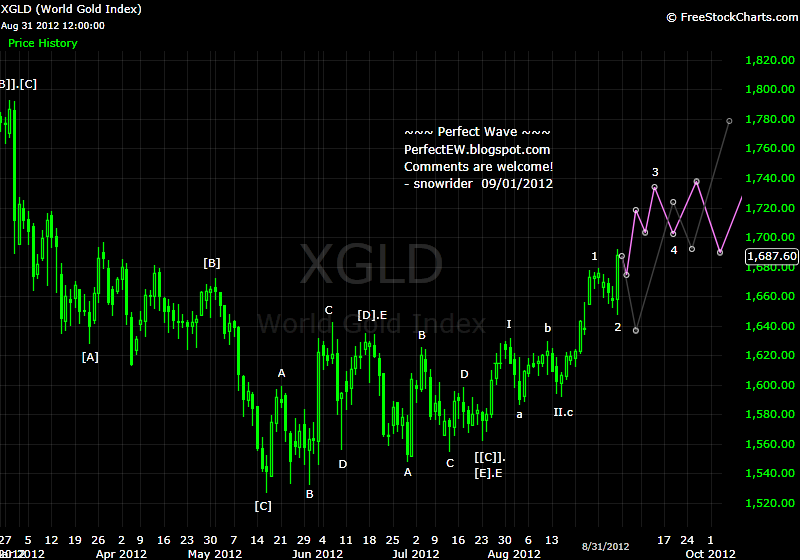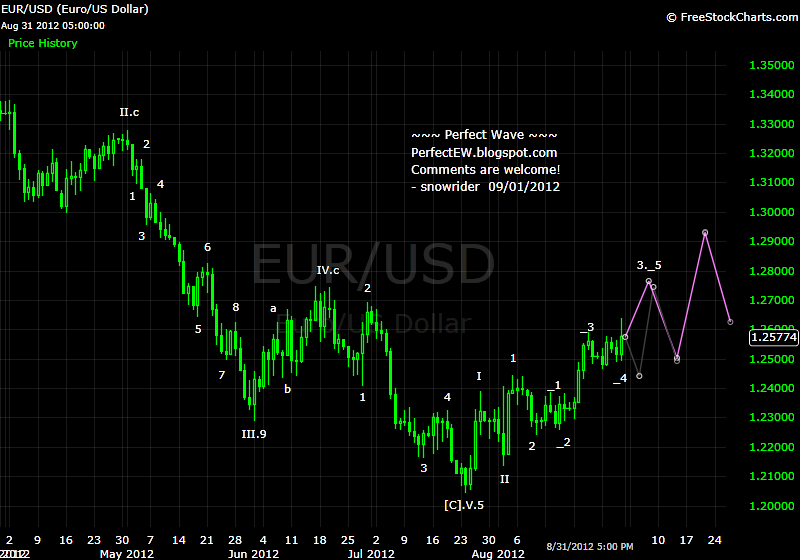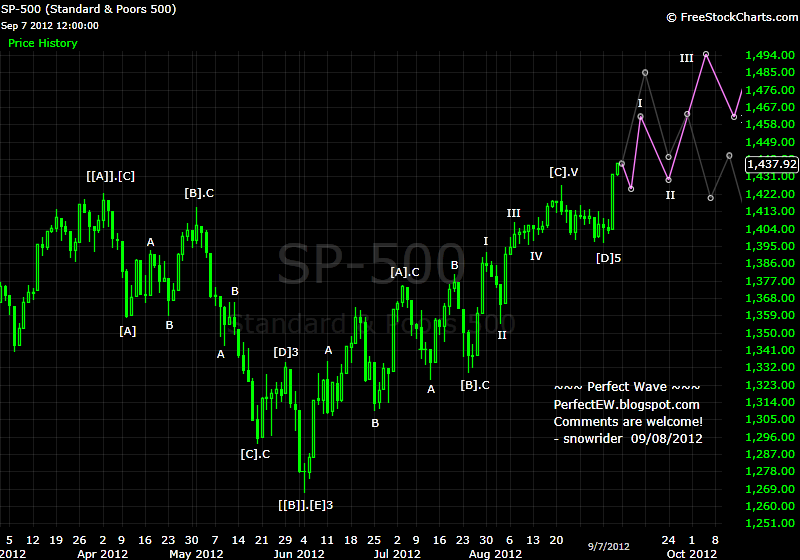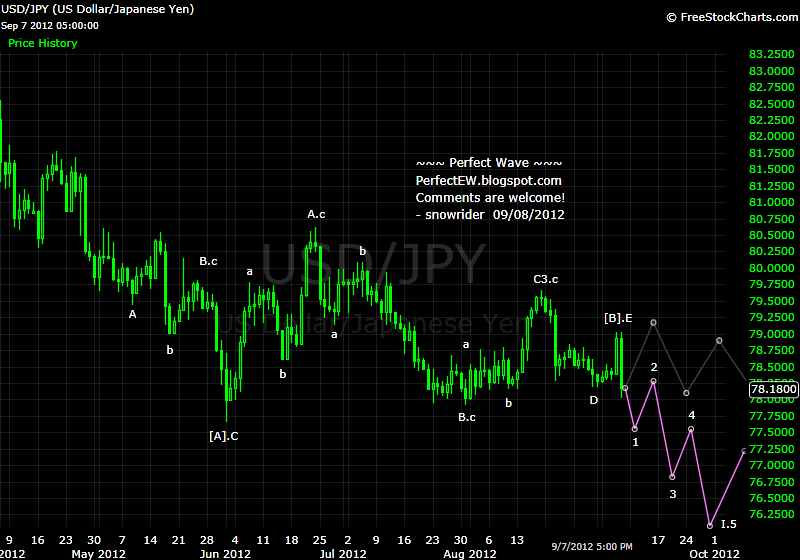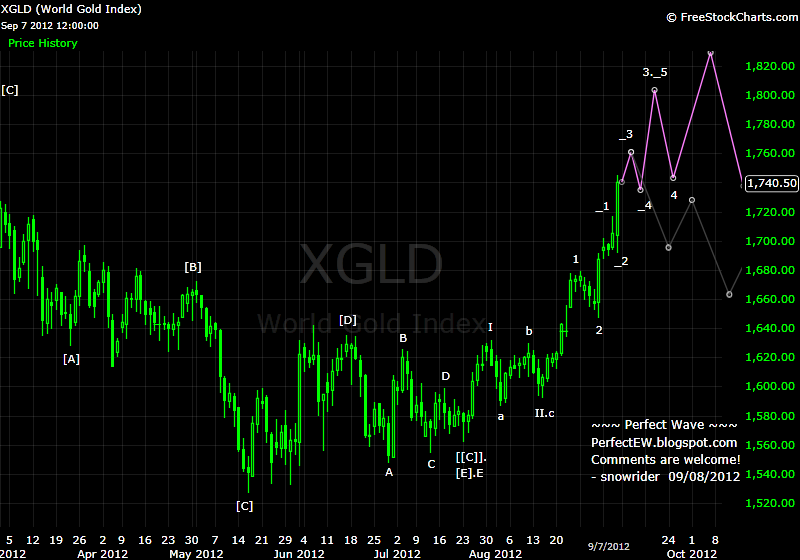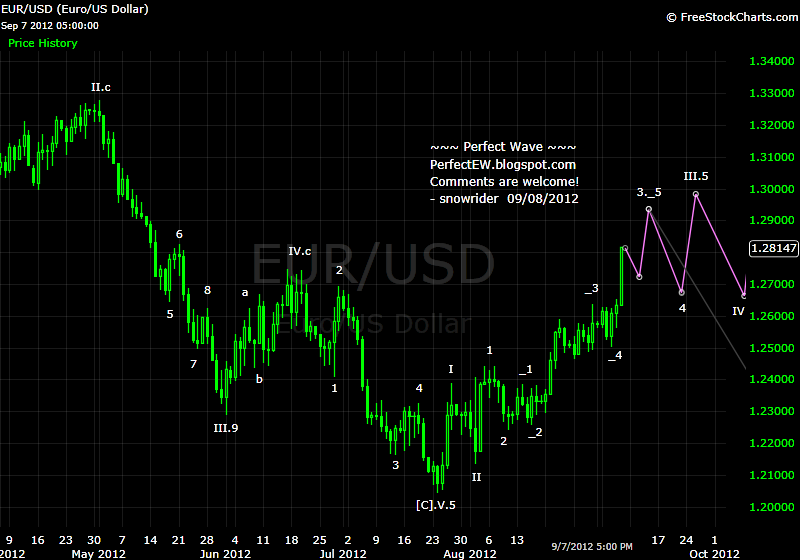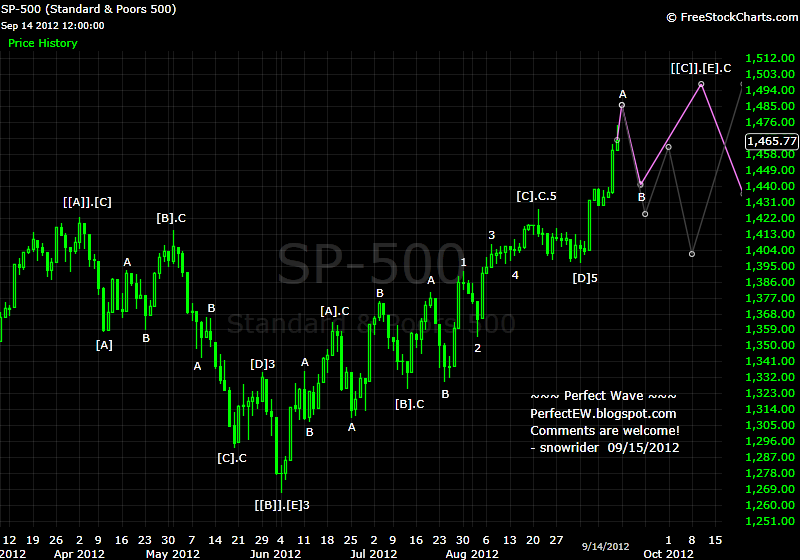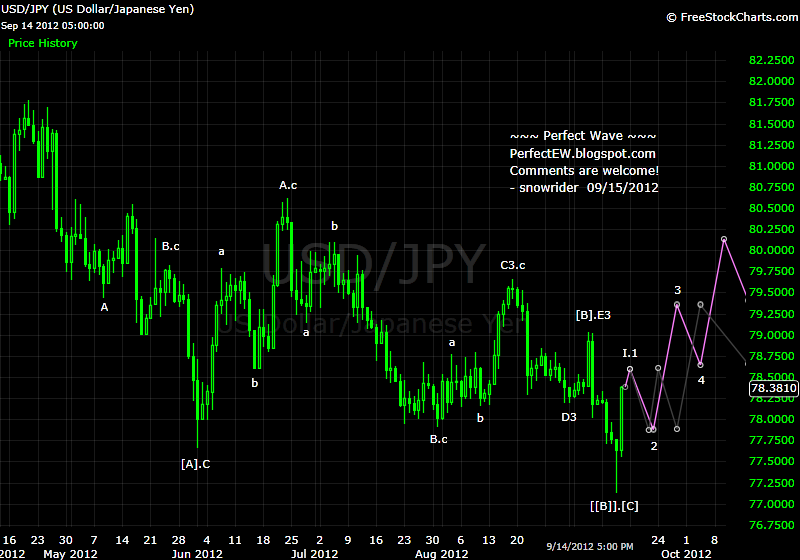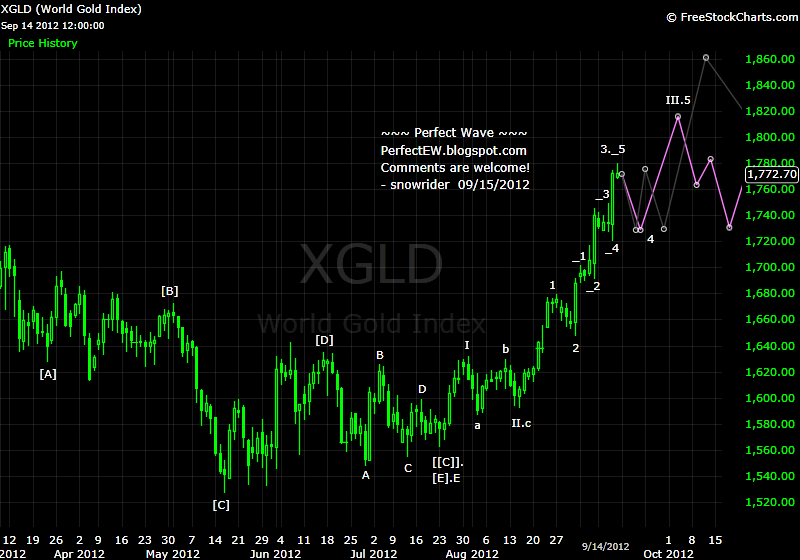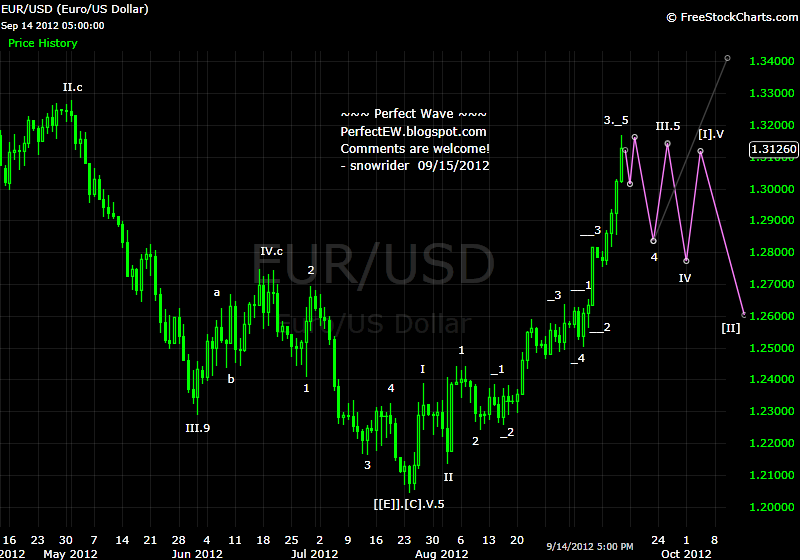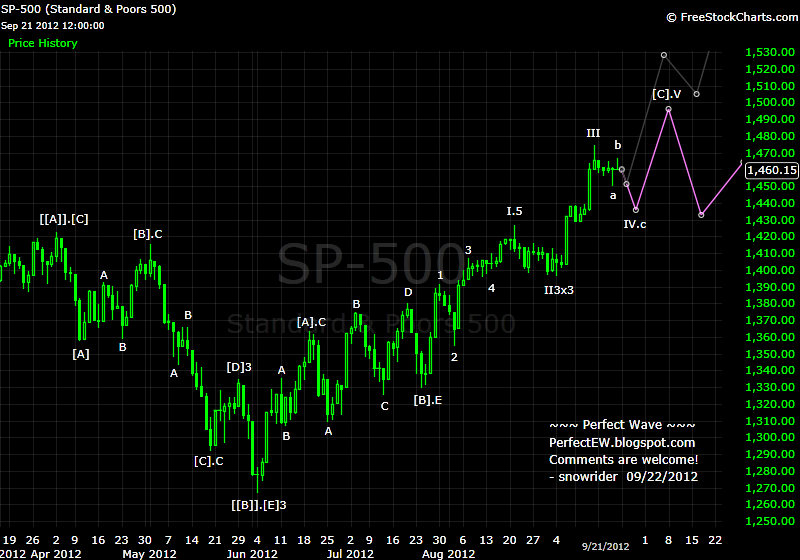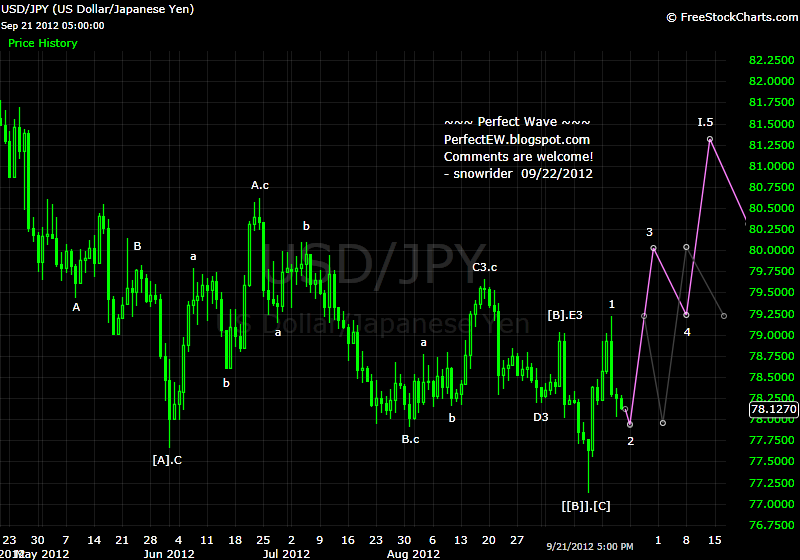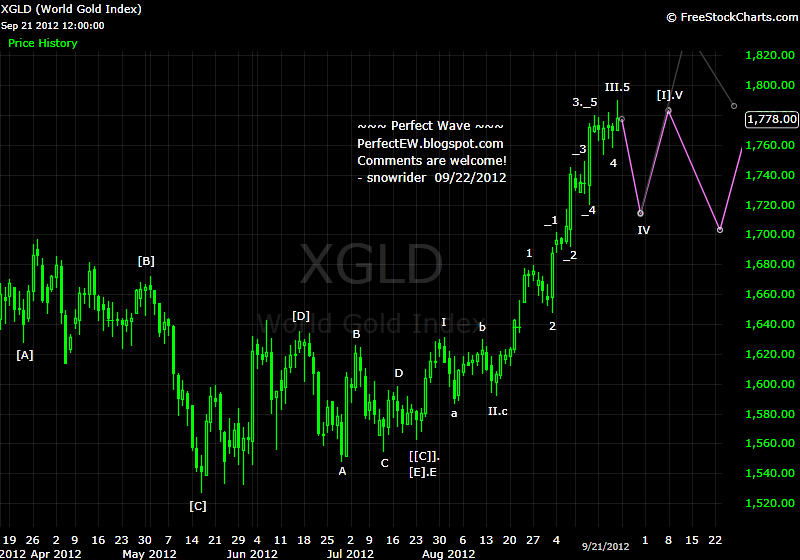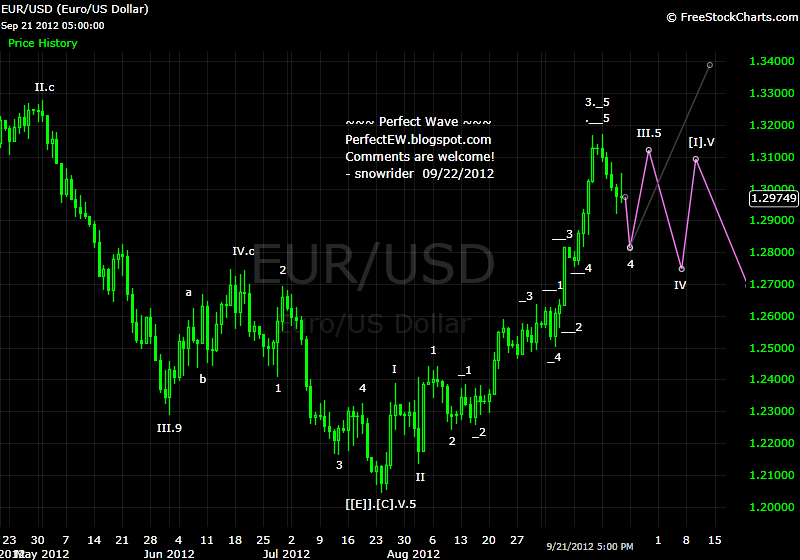You are using an out of date browser. It may not display this or other websites correctly.
You should upgrade or use an alternative browser.
You should upgrade or use an alternative browser.
snowrider
Well-known member
- Messages
- 423
- Likes
- 3
stringfx - Thanks for your kind words! The way I see playing EW is like playing chess with the market. If we can get more people to watch the game, we get more ideas about what the market might be going to in its next move. There is no absolutely correct or wrong wave count because anything can happen. As long as we are prepared, we know how to respond to any market scenario. That's why I post my wave count every weekend and hope to get some commments from EW enthusiasts. About GBP, I used to trade those 4 major currencies (or 6 including CAD and AUD). Now I focus only on 2 currencies, so I do not follow Sterling. You are welcome to post your analysis here so that it can benefit everyone here, and also you would get feedback from people here.Hi Snowrider, I am a big fan of EW and your thread is an inspiration. I usually do my own analysis but i do not have anywhere to confirm my counts. I stumbled upon your thread and now i have somewhere to go for confirmation. Thank you. I do not trade stocks but your usd/jpy and eur/usd counts helps a lot. Is it possible for you to post gbp/usd as well? if it is possible and time permits you, i'd appreciate that a lot. Great thread !! Regards
snowrider
Well-known member
- Messages
- 423
- Likes
- 3
Are the prices you quote cash or futures. Sorry if this is a stupid question. Thanks.
The charts that I count wave are cach (cash index or spot).
snowrider
Well-known member
- Messages
- 423
- Likes
- 3
Thanks for the quick reply. I did think it was the cash but just wanted to make sure.
🙂
snowrider
Well-known member
- Messages
- 423
- Likes
- 3
Perfect Wave: KISS Principle
When we deal with something very complex, a good idea is to simplify the process. Keep it simple and stupid (KISS Principle). How to? We first look at the chart and make a guess (with some imagination) about what the wave structure the market is forming most likely. With a scenario in our mind, we then *peg* an existing wave by assuming that wave is something. For example, we make an assertion that the stock market is going to surge tomorrow because the market has finished wave-2 today. With that assertion, we will need to find out two things:
1. what a correct movement (in favor of us) is, and
2. what market movement will invalidate our assertion
For example, if the market does surge, then our preferred wave count is correct; if the market goes below yesterday's low, then the wave-2 has not finished yet.
About the second question, we need to understand what purpose each wave segment serves:
wave-1: recover after panic or climax
wave-2: accumulation
wave-3: moving the price
wave-4: distribution
wave-5: panic or climax (false break)
So my answer to your second question is that I trade wave-3 only most of the time.
Snowrider, Thank you for your response. May be I did not pick a good example. Say, today is the bottom of the previous (down) wave (before the establishment of wave 1 and 2), then how is one going to ascertain whether this is a 3-wave correction or a 5-wave progressive wave? Or, do you trade wave 1, 2 at all? Or, you will trade through all the 5 waves (in one hit), riding through the wave 2/4 corrections, a swing trade, or do you get out of wave 1, then position for wave 2, and then wave 3 ...... 4, and then 5.
When we deal with something very complex, a good idea is to simplify the process. Keep it simple and stupid (KISS Principle). How to? We first look at the chart and make a guess (with some imagination) about what the wave structure the market is forming most likely. With a scenario in our mind, we then *peg* an existing wave by assuming that wave is something. For example, we make an assertion that the stock market is going to surge tomorrow because the market has finished wave-2 today. With that assertion, we will need to find out two things:
1. what a correct movement (in favor of us) is, and
2. what market movement will invalidate our assertion
For example, if the market does surge, then our preferred wave count is correct; if the market goes below yesterday's low, then the wave-2 has not finished yet.
About the second question, we need to understand what purpose each wave segment serves:
wave-1: recover after panic or climax
wave-2: accumulation
wave-3: moving the price
wave-4: distribution
wave-5: panic or climax (false break)
So my answer to your second question is that I trade wave-3 only most of the time.
snowrider
Well-known member
- Messages
- 423
- Likes
- 3
OCO Order and Trading Wave-3
Ideally, it's true to stay away corrections in order to make life easier and to make the best use of the trading money to trade only the fastest movements. However, it is not that easy to clearly identify a corrective wave. Also, if you are managing a large fund, wave-2 is where you use for accumulating and wave-4 for distributing because it is not possible to get fully loaded at the very moment when wave-3 is confirmed. Most of the time the confirmation is coming from the penetration of some key area, and it's very hard to load much when the market moves very fast at that moment.
About the idea to "trade only wave 3 (and 5) of wave C", it is essentially trading the impulsive wave of a lower timeframe. (Remember that we talked about to trade the timeframe that we count the wave? in Perfect Wave: Trade Talk - Trade the Timeframe That We Count the Wave)
Ideally, it's true to stay away corrections in order to make life easier and to make the best use of the trading money to trade only the fastest movements. However, it is not that easy to clearly identify a corrective wave. Also, if you are managing a large fund, wave-2 is where you use for accumulating and wave-4 for distributing because it is not possible to get fully loaded at the very moment when wave-3 is confirmed. Most of the time the confirmation is coming from the penetration of some key area, and it's very hard to load much when the market moves very fast at that moment.
About the idea to "trade only wave 3 (and 5) of wave C", it is essentially trading the impulsive wave of a lower timeframe. (Remember that we talked about to trade the timeframe that we count the wave? in Perfect Wave: Trade Talk - Trade the Timeframe That We Count the Wave)
snowrider
Well-known member
- Messages
- 423
- Likes
- 3
I did started from using TA indicators, and I have played all indicators inside out before throwing them away. I understand and know them too well so that I won't use them. Given a TA indicator, you can ask yourself some simple questions about that indicator:Snowrider, As you know, I have only started to read your posts recently, and am glad to learn that you do not use indicators. I am in a love-hate situation with indicators. I would like to get rid of them completely, however, they nevertheless give me some indication, even though, at times, they do not work at all, but which I have prepared for. Would you be happy to tell me your view point of indicators, and why you dislike them? And how would you be able to notice divergence(s)?
1. Do you know how to use it?
2. Do you know the formula (how it is calculated)?
3. Do you know the idea behind the formula (why it is designed that way)?
4. Do you know what timeframes that indicator work best with what parameter values?
Once you know the formula, have you thought about tweaking it a little bit or create your own formula? Once you create your own formular (your own TA indicator), you might be wondering what the optimal parameter values for your indicator are? At that moment, you might want to start playing system trading. You will then write you own systems and start back-testing historical data. In the end, you might succeed on that route - system trading. However, I did not, so I threw away everything and went back to price action/behavior. Please read more:
System Trading vs Elliott Wave (I, II, and III)
About the question of identifying divergence ... EW has some very good patterns for you to identify the end of a wave. For example, the Ending Diagonal Triangle pattern will bring your TA indicators to divergence. You don't need an indicator to tell you that because the chart already told you.

